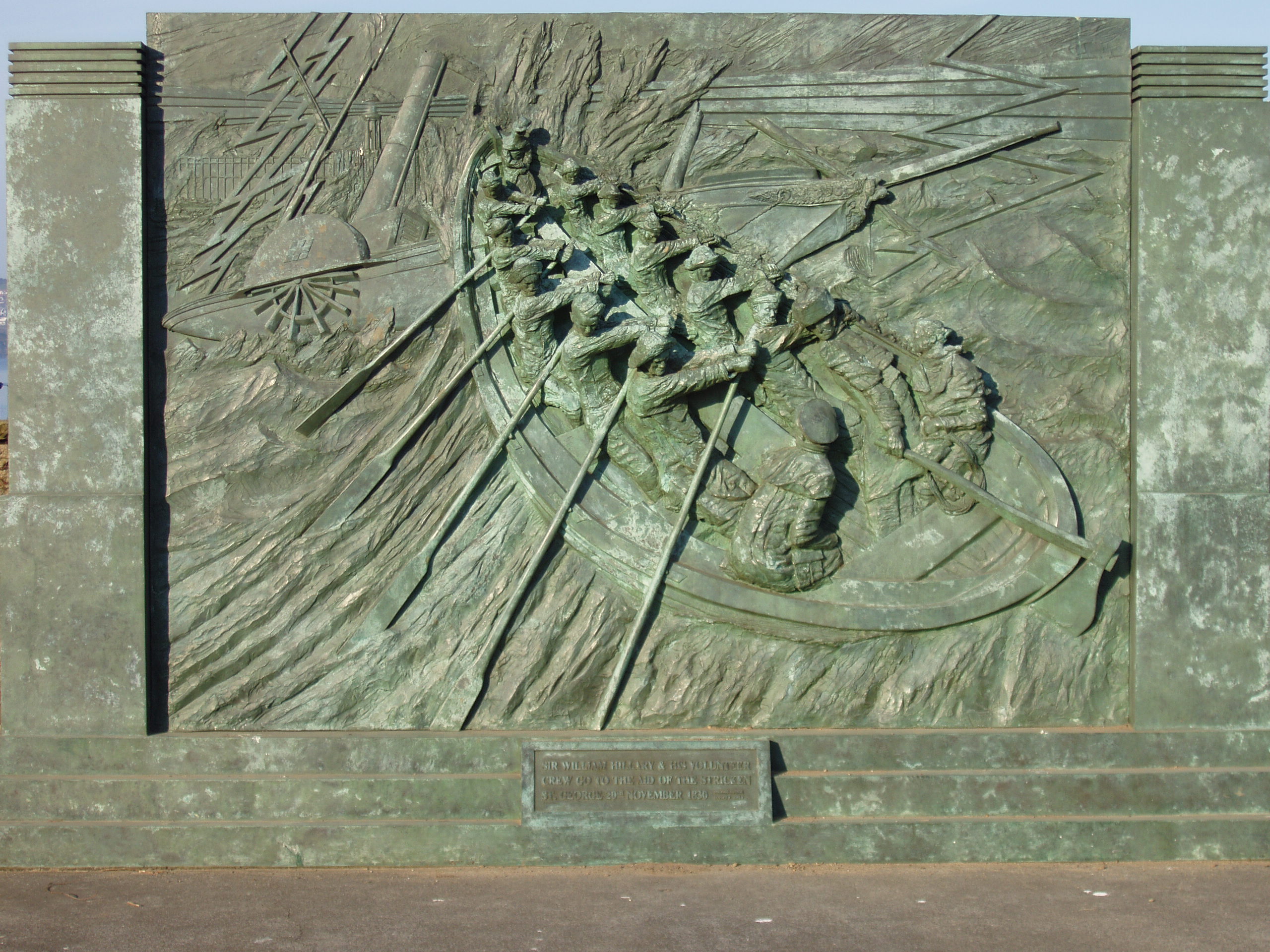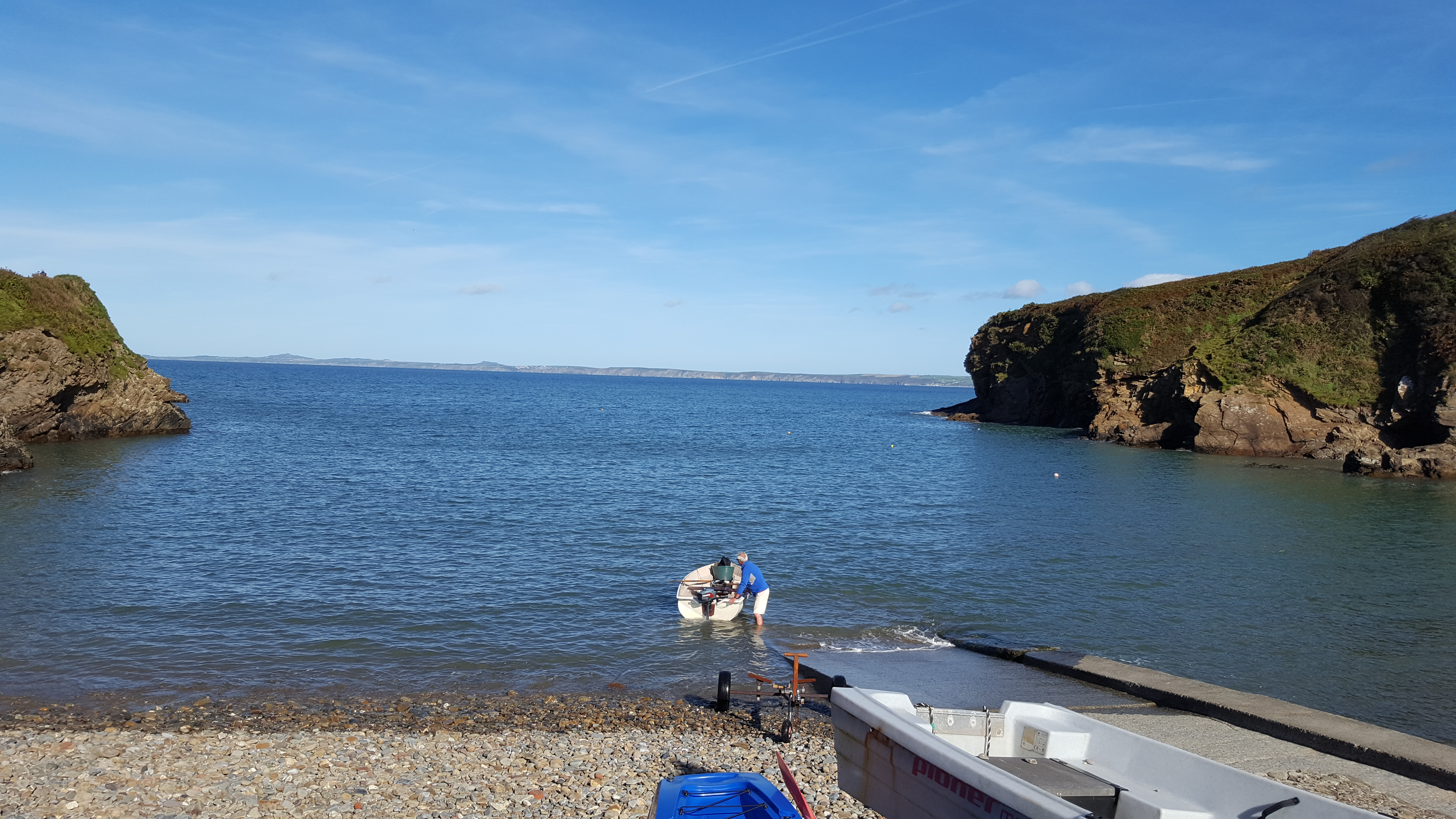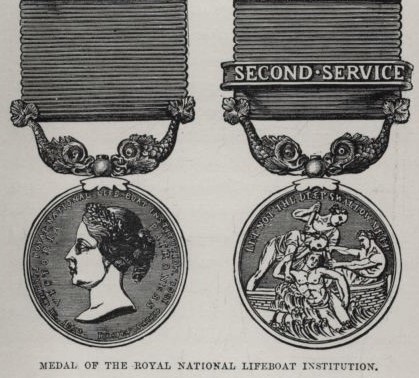|
Little And Broad Haven Lifeboat Station
Little and Broad Haven Lifeboat Station is a Royal National Lifeboat Institution (RNLI) lifeboat station in Pembrokeshire, West Wales. The station was opened in 1882 at Little Haven where it operated until 1921. It reopened in 1967 under its present name, and serves the area in St Bride's Bay surrounding Little Haven and Broad Haven resorts. When it was built it was the RNLI's smallest lifeboat station. The station operates a inshore lifeboat, launched by tractor and trailer. History When the RNLI first established the station in 1882 the lifeboat was kept afloat under the shelter of Goldtrop Head. In 1903 a boathouse and slipway were built. By 1921 there was reduced need for the service and the station closed with cover available from St Davids and Angle. By 1967, with the increase of pleasure boating and the development of the local holiday beaches, the RNLI reopened the station in a boathouse built by the Rural District Council. A dedicated boathouse was built in 1982. The ... [...More Info...] [...Related Items...] OR: [Wikipedia] [Google] [Baidu] |
Pembrokeshire
Pembrokeshire ( ; cy, Sir Benfro ) is a Local government in Wales#Principal areas, county in the South West Wales, south-west of Wales. It is bordered by Carmarthenshire to the east, Ceredigion to the northeast, and the rest by sea. The county is home to Pembrokeshire Coast National Park. The Park occupies more than a third of the area of the county and includes the Preseli Hills in the north as well as the Pembrokeshire Coast Path. Historically, mining and fishing were important activities, while industry nowadays is focused on agriculture (86 per cent of land use), oil and gas, and tourism; Pembrokeshire's beaches have won many awards. The county has a diverse geography with a wide range of geological features, habitats and wildlife. Its prehistory and modern history have been extensively studied, from tribal occupation, through Roman times, to Welsh, Irish, Norman, English, Scandinavian and Flemish influences. Pembrokeshire County Council's headquarters are in the county ... [...More Info...] [...Related Items...] OR: [Wikipedia] [Google] [Baidu] |
Wales
Wales ( cy, Cymru ) is a Countries of the United Kingdom, country that is part of the United Kingdom. It is bordered by England to the Wales–England border, east, the Irish Sea to the north and west, the Celtic Sea to the south west and the Bristol Channel to the south. It had a population in 2021 of 3,107,500 and has a total area of . Wales has over of coastline and is largely mountainous with its higher peaks in the north and central areas, including Snowdon (), its highest summit. The country lies within the Temperateness, north temperate zone and has a changeable, maritime climate. The capital and largest city is Cardiff. Welsh national identity emerged among the Celtic Britons after the Roman withdrawal from Britain in the 5th century, and Wales was formed as a Kingdom of Wales, kingdom under Gruffydd ap Llywelyn in 1055. Wales is regarded as one of the Celtic nations. The Conquest of Wales by Edward I, conquest of Wales by Edward I of England was completed by 1283, th ... [...More Info...] [...Related Items...] OR: [Wikipedia] [Google] [Baidu] |
RNLI
The Royal National Lifeboat Institution (RNLI) is the largest charity that saves lives at sea around the coasts of the United Kingdom, the Republic of Ireland, the Channel Islands, and the Isle of Man, as well as on some inland waterways. It is one of several lifeboat services operating in the same area. Founded in 1824 as the National Institution for the Preservation of Life from Shipwreck, soon afterwards becoming the Royal National Institution for the Preservation of Life from Shipwreck, under the patronage of King George IV. On 5 October 1854, the institution’s name was changed to its current name (RNLI), and in 1860 was granted a royal charter. The RNLI is a charity in the UK and in the Republic of Ireland and has enjoyed royal patronage since its foundation, the most recent being Queen Elizabeth II until her death on 8 September 2022. The RNLI is principally funded by legacies (65%) and donations (28%), with the remainder from merchandising and investment. Most of th ... [...More Info...] [...Related Items...] OR: [Wikipedia] [Google] [Baidu] |
Royal National Lifeboat Institution
The Royal National Lifeboat Institution (RNLI) is the largest charity that saves lives at sea around the coasts of the United Kingdom, the Republic of Ireland, the Channel Islands, and the Isle of Man, as well as on some inland waterways. It is one of Independent lifeboats in Britain and Ireland, several lifeboat services operating in the same area. Founded in 1824 as the National Institution for the Preservation of Life from Shipwreck, soon afterwards becoming the Royal National Institution for the Preservation of Life from Shipwreck, under the patronage of King George IV. On 5 October 1854, the institution’s name was changed to its current name (RNLI), and in 1860 was granted a royal charter. The RNLI is a charity in the UK and in the Republic of Ireland and has enjoyed royal patronage since its foundation, the most recent being Elizabeth II of the United Kingdom, Queen Elizabeth II until her death on 8 September 2022. The RNLI is principally funded by Will (law), legacie ... [...More Info...] [...Related Items...] OR: [Wikipedia] [Google] [Baidu] |
Lifeboat (rescue)
A rescue lifeboat is a boat rescue craft which is used to attend a vessel in distress, or its survivors, to rescue crew and passengers. It can be hand pulled, sail powered or powered by an engine. Lifeboats may be rigid, inflatable or rigid-inflatable combination-hulled vessels. Overview There are generally three types of boat, in-land (used on lakes and rivers), in-shore (used closer to shore) and off-shore (into deeper waters and further out to sea). A rescue lifeboat is a boat designed with specialised features for searching for, rescuing and saving the lives of people in peril at sea or in estuaries. In the United Kingdom and Ireland rescue lifeboats are typically vessels crewed by volunteers, intended for quick dispatch, launch and transit to reach a ship or individuals in trouble at sea. Off-shore boats are referred to as 'All-weather' and generally have a range of 150–250 nautical miles. Characteristics such as capability to withstand heavy weather, fuel capacity, navi ... [...More Info...] [...Related Items...] OR: [Wikipedia] [Google] [Baidu] |
Little Haven
Little Haven ( cy, Hafan Fach) is a village at the south-east corner of St Bride's Bay, Pembrokeshire, Wales. It is in the Pembrokeshire Coast National Park. Together with Broad Haven to the north, Little Haven forms The Havens community for which the 2001 census recorded a population of 1,328. The Pembrokeshire Coast Path runs through the village. Since May 2012, this route has also formed a part of the Wales Coast Path. At low tide it is possible to walk north along the sandy shore from Little Haven via a larger bay known as the Settlands, past a second point ('The Rain') to the wider bay at Broad Haven. There is an Anglican church in Little Haven. Geology Little Haven lies at the westernmost edge of the Pembrokeshire Coalfield. The local rocks are assigned to the South Wales Lower and Middle Coal Measures formations. They largely comprise faulted mudstones with thin and contorted coal seams though the cliffs to the north and the south of the bay are formed in sandston ... [...More Info...] [...Related Items...] OR: [Wikipedia] [Google] [Baidu] |
St Bride's Bay
St Brides Bay ( cy, Bae Sain Ffraid) is a bay in western Pembrokeshire, West Wales. Either Skomer Island or the mainland extremity of Wooltack Point at the western end of the Marloes Peninsula marks the southern limit of the bay whilst its northern limit is marked by Ramsey Island off St David's Head. The mouth of the bay is about wide and extends some eastwards from this line. Geology The northern and southern shores of the bay are mainly rocky in nature, backed by cliffs up to high. Its eastern shore comprises a series of large and small sandy beaches between rocky sections. The geological exposures around the bay reveal great complexity with considerable folding and faulting of the strata. The cliffs of its southern shore are formed from sandstones of Ordovician and Devonian age together with a suite of both intrusive and extrusive igneous rocks, some of which are Precambrian in age. Those in the north comprise a series of Precambrian and Cambrian age rocks of both sedi ... [...More Info...] [...Related Items...] OR: [Wikipedia] [Google] [Baidu] |
Broad Haven
Broad Haven ( cy, Aberllydan) is a village and seaside resort in the south east corner of St Bride's Bay at the western terminus of the B4341 road in south Pembrokeshire, Wales. Broad Haven and Little Haven together form the Havens community and division of Pembrokeshire County Council. The 2001 census records a population of 1,328 for the Havens. The only church in Broad Haven is the Baptist church, although there are Anglican churches in nearby Little Haven. It is a seaside resort with a large west-facing Blue Flag beach offering safe bathing for families and good surfing, windsurfing and sailing opportunities. The north end of Broad Haven beach has a number of interesting geological features including folding, a stack (locally known as Lion Rock) and natural arches. The town has a number of restaurants and pubs including The Galleon Inn and The Ocean. Broad Haven should not to be confused with the Broad Haven South beach near Bosherston in south Pembrokeshire. History Lit ... [...More Info...] [...Related Items...] OR: [Wikipedia] [Google] [Baidu] |
St Davids Lifeboat Station
St Davids Lifeboat Station (based in St Justinian, St Davids, Pembrokeshire, Wales) is a Royal National Lifeboat Institution (RNLI) station. It was opened in 1869 and to date has been involved in saving over 360 lives at sea in more than 420 launches. The station operates both an all-weather (ALB) and an inshore (ILB) lifeboat. History The station was established by the RNLI in 1869 following appeals from local residents after a number of shipwrecks nearby. The Institution had already awarded a silver medal to local man Thomas M Rees for risking his life in an incident in 1867. The station, consisting of a boathouse and slipway at Porthstinan (St Justinians), was provided with the 32-foot ''Augusta'', donated by the Earl of Dartmouth. ''Augusta'' remained in service until 1885, saving 23 lives. From 1885 to 1910, 16 lives were saved by the crew of the station's new lifeboat, ''Gem''. The lifeboat was wrecked on The Bitches reef during a rescue on 13 October 1910, and three ... [...More Info...] [...Related Items...] OR: [Wikipedia] [Google] [Baidu] |
Awards Of The Royal National Lifeboat Institution
A number of Royal National Lifeboat Institution awards have been established by the Royal National Lifeboat Institution (RNLI) since its creation in 1824. None are approved by the Crown, and are therefore unofficial awards. As such, they do not appear in the official British order of wear, although the principal lifesaving award, the ''Medal of the RNLI'', can be worn on the right breast in uniform by members of the British armed forces. RNLI awards The RNLI awards include: Medal of the RNLI The medal was established in 1824, the same year the RNLI was founded, to reward "humane and intrepid exertions in saving life from shipwrecks on our coasts, deemed sufficiently conspicuous to merit honourable distinction". The medal can be awarded for saving life at sea in gold, silver and, since 1917, in bronze. While awards are now only made to lifeboat crew who risk their lives in rescue attempts, a number of nineteenth century medals were bestowed on others who saved life from the s ... [...More Info...] [...Related Items...] OR: [Wikipedia] [Google] [Baidu] |
Flag Of The Royal National Lifeboat Institution
A flag is a piece of fabric (most often rectangular or quadrilateral) with a distinctive design and colours. It is used as a symbol, a signalling device, or for decoration. The term ''flag'' is also used to refer to the graphic design employed, and flags have evolved into a general tool for rudimentary signalling and identification, especially in environments where communication is challenging (such as the maritime environment, where semaphore is used). Many flags fall into groups of similar designs called flag families. The study of flags is known as "vexillology" from the Latin , meaning "flag" or "banner". National flags are patriotic symbols with widely varied interpretations that often include strong military associations because of their original and ongoing use for that purpose. Flags are also used in messaging, advertising, or for decorative purposes. Some military units are called "flags" after their use of flags. A ''flag'' (Arabic: ) is equivalent to a brigade i ... [...More Info...] [...Related Items...] OR: [Wikipedia] [Google] [Baidu] |







